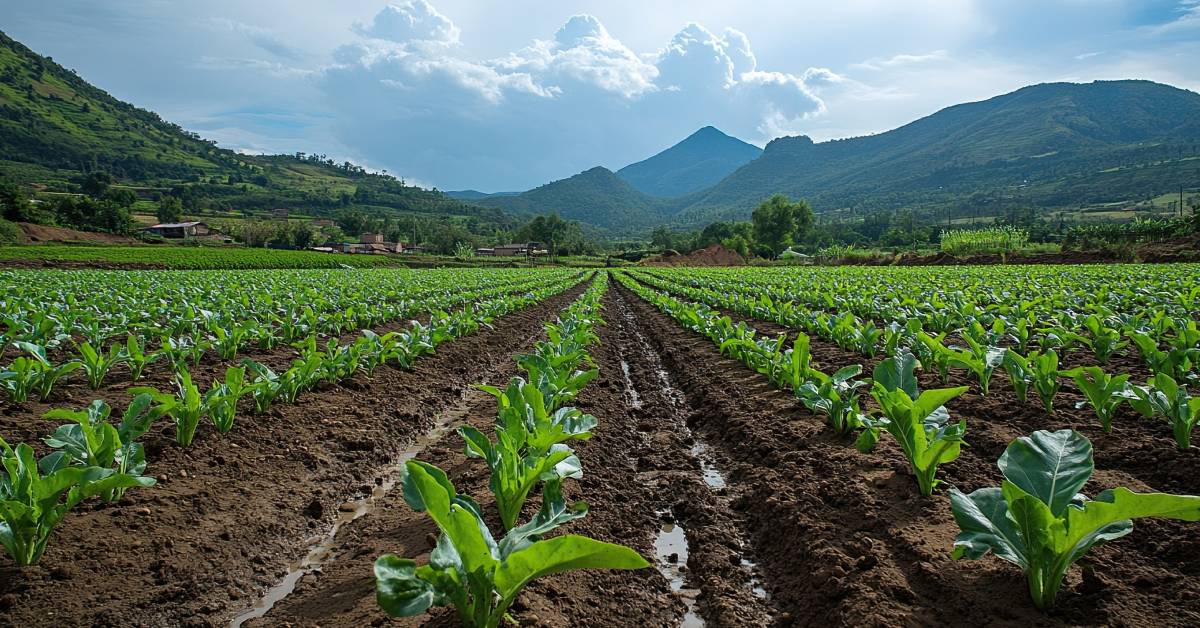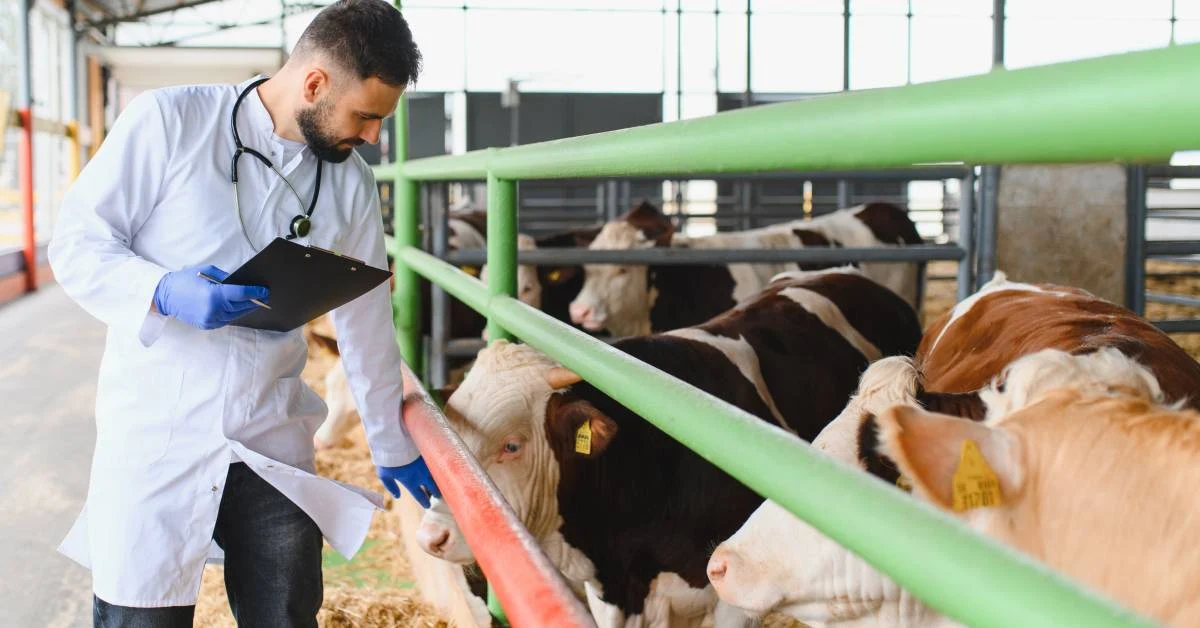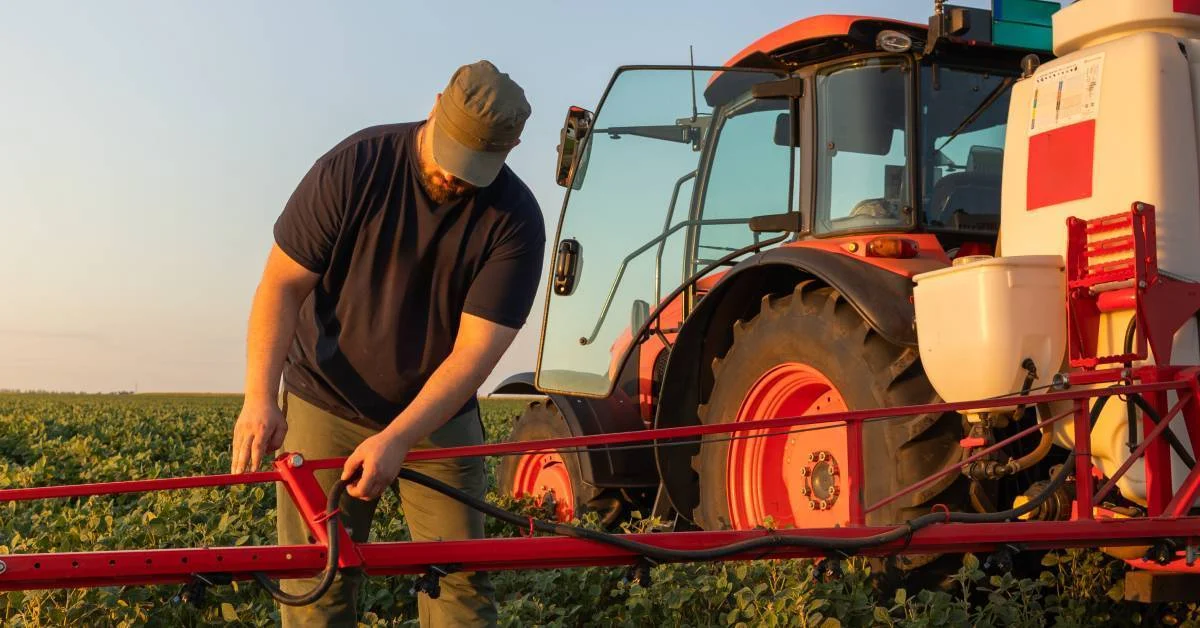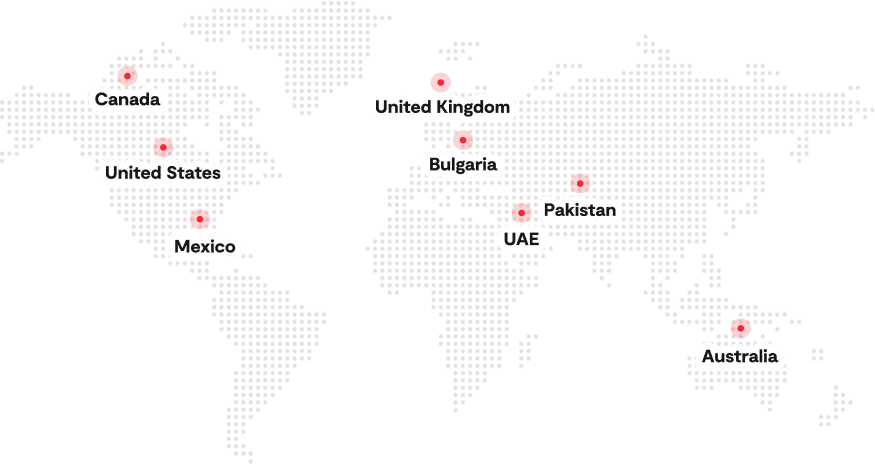As the global population continues to grow, farmers are under mounting pressure to produce more food with fewer resources. By 2025, challenges like climate change, unpredictable weather, shrinking farmland, and water scarcity have made it more important than ever to find ways to increase crop yield without compromising sustainability. Farmers are expected to meet rising demand while keeping costs in check and protecting the environment, which requires a smarter approach to farming than in previous decades.
The good news is that advancements in technology, coupled with time-tested agricultural methods, provide clear solutions. From soil management and crop rotation to precision farming and advanced irrigation, today’s growers have access to a wide range of practices that directly boost productivity. In fact, research shows that AI-enhanced precision farming can increase crop yields by 15–20% while cutting input costs by around 15%. For the farmers asking how to increase crop yield, the answer lies in combining innovation with proven strategies that have stood the test of time.
In this blog, we’ll explore ten agricultural practices that are helping farmers achieve higher yields in 2025. Alongside these methods, we will also discuss how the latest digital crop solutions by Folio3 Agtech support farmers in making informed decisions, improving efficiency, and ultimately increasing crop yields throughout the season.
Why Increasing Crop Yield Matters
Agriculture in 2025 faces mounting pressures that make the need to increase crop yield more urgent than ever. Climate change is disrupting planting and harvesting seasons, while soil degradation from decades of intensive farming reduces fertility. Labor shortages and rising wages add further strain, especially for farms relying on seasonal workers. For farmers, achieving higher yields is not just about producing more but about building resilience in a competitive market, offsetting rising input costs, and ensuring long-term financial stability.
On a global scale, efforts to improve crop yield are vital for food security, as even modest gains can help feed growing populations while keeping food affordable. To meet these challenges, smarter agricultural practices are essential, and we’ll now explore ten proven methods reshaping modern farming.
10 Proven Agricultural Practices That Increase Crop Yield in 2025
Modern agriculture combines traditional wisdom with new technology to overcome today’s biggest challenges. By adopting the right strategies, farmers can protect soil health, use resources more efficiently, and secure higher returns from every acre. Below, we break down ten proven agricultural practices that increase crop yield and show why they are essential for farming success in 2025.
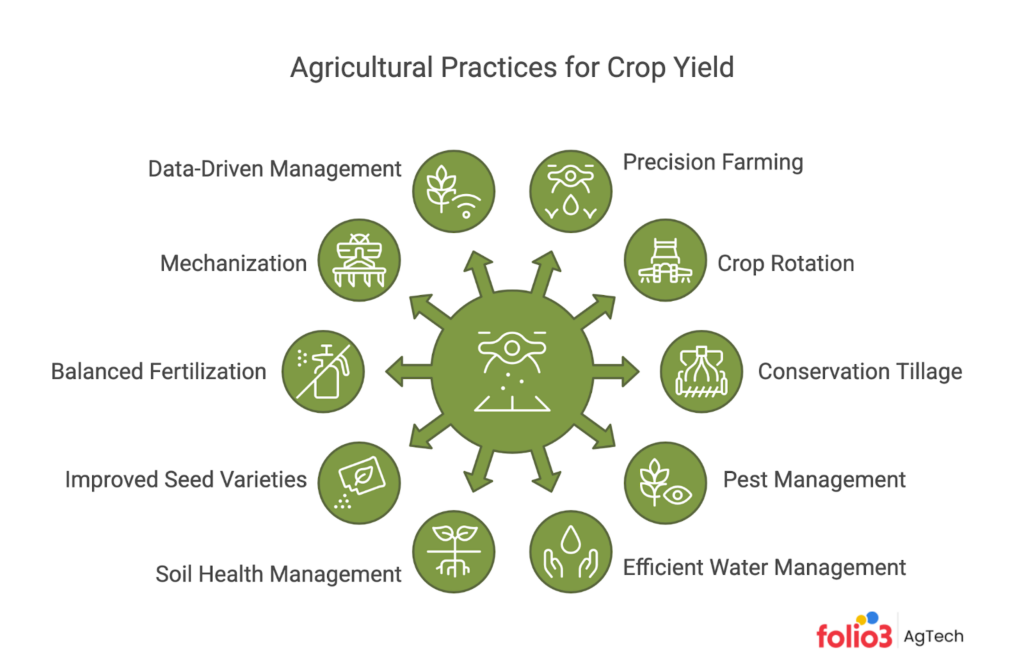
1. Precision Farming and Smart Technology
Among the most effective agricultural practices that increase crop yields, precision agriculture technology has become a cornerstone for farmers in 2025. This approach relies on advanced tools such as GPS-guided tractors, drones for agriculture, soil sensors, and AI-driven platforms to give farmers a detailed picture of what their fields truly need. Instead of treating entire fields uniformly, precision farming enables growers to make decisions at the micro level, targeting specific areas that require water, fertilizer, or organic pest control.
Key applications of precision farming include:
- GPS-guided equipment – ensures accurate planting, spraying, and harvesting, reducing overlap and wasted resources.
- Drones and aerial imagery – help farmers quickly identify stressed plants, nutrient deficiencies, or pest outbreaks before they spread.
- Soil sensors – provide real-time data on moisture and nutrient levels, enabling more precise irrigation and fertilization.
- AI-driven analytics – predict crop performance, optimize input use, and guide smarter decisions throughout the growing season.
The benefits of this technology go far beyond convenience. Studies show that precision farming can increase crop yields by 10–20% while reducing water use by 30–50%, and even fertilizer costs by up to 20–30%. By applying resources only where needed, precision farming reduces waste, lowers production costs, and minimizes environmental impact. At the same time, it helps farmers increase crop yield by creating the best possible growing conditions for each plant. With rising input prices and limited natural resources, efficiency has become essential. Precision farming offers a pathway for farmers to remain competitive while maintaining sustainability, making it one of the most critical tools for the future of agriculture.
2. Crop Rotation and Diversification
For centuries, farmers have relied on crop rotation as a practical solution to improve soil health and maintain long-term productivity. In 2025, the practice remains one of the most effective answers for those asking how to increase crop yield. By alternating different crops on the same land over multiple seasons, farmers break the cycles of pests and diseases that thrive when a single crop is grown repeatedly. This reduces dependence on chemical pesticides and helps maintain healthier plants.
One of the crop rotation benefits is that it also plays a vital role in soil fertility. Different crops draw and return varying nutrients to the soil. For example, legumes fix nitrogen, enriching the soil for subsequent cereal crops. This natural nutrient balance reduces the need for synthetic fertilizers and promotes more sustainable farming, and increases crop yields.
Some modern approaches to crop rotation and diversification include:
- Legume–Cereal Rotation – planting soybeans or peas before wheat or corn to restore nitrogen levels.
- Root–Leaf Rotation – alternating root vegetables like carrots with leafy crops such as spinach or lettuce to minimize nutrient depletion.
- Cover Crops Between Seasons – using clover or rye grass to protect soil structure and improve organic matter content.
By adopting these systems, farmers not only increase crop yield but also strengthen resilience against climate challenges. Diversified fields are less vulnerable to extreme weather, pests, and market fluctuations. As a result, crop rotation and diversification continue to be essential strategies for building both sustainability and profitability in modern agriculture.
3. Conservation Tillage
Conservation tillage is gaining momentum as one of the most effective ways to increase crop yields while preserving soil health. Traditional plowing and deep tillage often disturb soil structure, release stored carbon, and accelerate erosion. In contrast, conservation practices like no-till and reduced tillage leave crop residues on the soil surface, protecting it from harsh weather and maintaining long-term fertility.
The advantages of conservation tillage include:
- Improved soil structure – by minimizing soil disturbance, the natural composition of soil layers is maintained, allowing roots to penetrate more effectively.
- Better moisture retention – crop residues act as a protective cover, reducing evaporation and helping soils retain water during dry spells.
- Reduced erosion – surface cover shields the soil from wind and water erosion, keeping valuable topsoil intact.
- Enhanced biodiversity – maintaining organic matter fosters soil microbes and beneficial insects that support crop health.
Farmers adopting no-till methods also benefit from reduced fuel and labor costs, since heavy plowing equipment is used less frequently. Over time, soils under conservation tillage develop higher levels of organic matter, which translates into stronger crops and higher yields.
While conservation tillage may require adjustments in weed management and planting techniques, its long-term benefits are clear. By protecting soil resources and conserving water, this practice provides a sustainable pathway to increase crop yields in an era where resource efficiency is just as important as productivity.
4. Integrated Pest Management
Among the most practical agricultural practices that increase crop yields, Integrated Pest Management (IPM) stands out for its balanced approach to controlling pests. Instead of relying solely on chemical pesticides, IPM combines biological, cultural, and organic methods to reduce pest populations while maintaining ecological balance. This ensures healthier crops, lower costs, and reduced environmental impact.
Key components of IPM include:
- Biological control: using natural predators like ladybugs, lacewings, or parasitic wasps to control harmful insect populations.
- Cultural practices: crop rotation, intercropping, and resistant seed varieties to prevent pest build-up.
- Selective chemical use: applying pesticides only when necessary and in targeted areas to minimize resistance and preserve beneficial organisms.
- Monitoring and early detection: regular field scouting and sensor-based tools to identify pest threats before they spread.
The benefits of IPM extend beyond pest reduction. By lowering the reliance on expensive chemical sprays, farmers cut production costs while maintaining crop quality. Crops grown under IPM systems are often healthier, less stressed, and more resilient, which directly helps farmers increase crop yield without compromising long-term sustainability. As consumer demand for safe and eco-friendly food grows, IPM also supports marketability by reducing chemical residues. For farmers in 2025, Integrated Pest Management is not just about fighting pests. It is a forward-looking strategy that boosts profitability, safeguards the environment, and strengthens food security.
5. Efficient Water Management and Irrigation
Water scarcity has become one of the greatest challenges for global agriculture in 2025. With agriculture consuming close to 70 percent of the world’s freshwater, farmers must adopt smarter ways of using this resource to maintain productivity. Efficient water management is now considered one of the most critical strategies to increase crop yield and ensure long-term sustainability.
Several modern irrigation methods are making a strong impact:
- Drip irrigation: Delivers water directly to plant roots, reducing evaporation losses and ensuring crops receive consistent moisture.
- Rainwater harvesting: Collects and stores rainfall for later use, giving farmers a low-cost and renewable water source.
- Irrigation scheduling tools: Digital platforms and soil moisture sensors help farmers determine the exact timing and quantity of irrigation required.
These practices not only conserve water but also reduce energy costs associated with pumping and distribution. They protect crops from both under-watering and over-watering, creating optimal growth conditions. Adopting efficient crop irrigation systems enables farmers to improve and increase crop yield while reducing stress on freshwater resources. In regions where droughts are more frequent, these technologies help stabilize production and protect livelihoods. By combining water-saving practices with modern digital tools, farmers in 2025 are better equipped to adapt to climate pressures, safeguard soil health, and keep farms profitable.
6. Soil Health Management
Healthy soil is the foundation of productive farming, and in 2025, it remains one of the most effective answers for anyone asking how to increase crop yield. For instance, a meta-analysis found that using organic amendments raised soil organic carbon by 38%, boosting crop yields by an average of 27% compared to mineral-only fertilization. Long-term trials also show that increasing SOC by 57% to 78%, via manure or peat and vermiculite, can raise combined wheat–maize yields by 12%–13%, while improving soil moisture retention. These findings highlight that improving soil fertility through SOC enhancements is not just beneficial, but essential for sustainable productivity.
Soil is not just a growing medium but a living ecosystem that influences plant health, water retention, and nutrient cycling. Managing it wisely ensures that farmers can sustain productivity year after year.
Key practices that protect and restore soil health include:
- Cover cropping: Planting legumes, clovers, or grasses during off-seasons prevents erosion, adds organic matter, and supports nitrogen fixation.
- Organic amendments: Applying manure, green waste, or compost improves soil structure, boosts microbial activity, and increases nutrient availability.
- Composting: Recycling farm residues into nutrient-rich compost reduces waste while enhancing soil fertility and water-holding capacity.
The soil microbiome plays a vital role in crop productivity. Beneficial microbes improve nutrient uptake, protect plants from diseases, and help crops adapt to stress. By prioritizing soil health, farmers adopt agricultural practices that increase crop yields while simultaneously working to improve soil fertility for the long term.
7. Use of Improved Seed Varieties
Selecting the right seed is one of the most fundamental decisions a farmer makes, and in 2025, improved varieties are proving essential to increase crop yield. Advances in plant breeding and biotechnology have introduced hybrid and climate-resilient seeds that outperform traditional varieties in both productivity and resilience.
Hybrid seeds are designed to maximize vigor, offering higher germination rates and uniform growth. This ensures crops mature consistently, making harvesting more efficient and predictable. Climate-resilient seeds, on the other hand, are bred to withstand challenges such as drought, heat stress, and new pest pressures. These traits allow farmers to secure reliable harvests even under unpredictable weather conditions.
The adoption of improved seed varieties also reduces losses from pests and diseases, minimizing the need for chemical interventions. This lowers input costs while protecting soil and environmental health. For farmers working with limited resources, such seeds offer a practical way to increase crop yields without major investments in additional land or water.
8. Balanced Fertilization
Fertilization has always been central to crop production, but in 2025, the focus has shifted from simply applying more nutrients to applying the right balance at the right time. Balanced fertilization ensures that crops receive the exact nutrients they need in proper proportions, which directly helps farmers improve crop yield while avoiding the risks of overuse. This approach is often guided by the 4R Nutrient Stewardship framework, using the right source, at the right rate, at the right time, and in the right place, to maximize efficiency and sustainability.
Traditional blanket applications often lead to nutrient wastage, soil degradation, and water pollution. Modern solutions, such as precision fertilization for crop growth, have changed this approach. Using soil testing, satellite data, and digital platforms, farmers can now map nutrient needs for different zones within a field. Fertilizer is then applied in targeted amounts, ensuring no excess or deficiency occurs.
A well-planned fertilization strategy focuses on three critical aspects:
- Macronutrients such as nitrogen, phosphorus, and potassium are needed for strong growth and yield.
- Secondary nutrients and micronutrients like calcium, zinc, and magnesium support plant health.
- Application timing and method to align with crop growth stages for maximum absorption.
Balanced fertilization is one of the most effective agricultural practices that increases crop yields in a sustainable way. It prevents long-term soil nutrient depletion while supporting stronger root systems, healthier plants, and higher productivity.
9. Mechanization and Farm Automation
Mechanization and automation have become vital for modern farming in 2025, helping farmers increase crop yields while addressing labor shortages. Advanced tractors, precision planters, and automated harvesters allow field operations to be completed faster and with greater accuracy. Robotics and smart machinery also reduce dependence on manual labor, cutting costs and saving time during critical growing and harvesting windows. By improving efficiency and minimizing human error, farm automation ensures consistent planting, timely harvesting, and reduced crop losses. For today’s farmers, mechanization is more than convenience. It is a reliable path to higher productivity and profitability.
10. Data-Driven Farm Management
In 2025, data will have become one of the most valuable tools to increase crop yield. Farm management software, predictive analytics, and dashboards allow growers to track soil health, weather, and resource use in real time. These insights help farmers make smarter decisions about irrigation, fertilization, and pest control, ensuring inputs are applied precisely where and when needed. Predictive models also reduce risks by forecasting potential challenges before they impact the harvest. By relying on data instead of guesswork, farmers can increase crop yield while protecting resources and improving profitability.
How Folio3 Agtech Is Helping Farmers Achieve Improved Crop Yields
Modern farming requires more than traditional practices. To stay competitive in 2025, farmers need digital tools that simplify operations, reduce risks, and directly support productivity. Folio3 Agtech offers a comprehensive crop management software designed to help farmers make smarter decisions and achieve consistent results across every stage of production.
Key features include:
- Breeding Management
- Crop Planning & Rotation
- Crop Pest Management
- Equipment Management
- Inventory Management
- Irrigation Management
- Harvest Management
- Finance Management
By bringing these functions into one platform, Folio3 Agtech empowers farmers to track, plan, and manage their operations with precision. This not only saves time but also ensures that resources are used efficiently for stronger harvests.
Conclusion
In 2025, the path to higher productivity lies in combining proven practices with modern innovation. Precision farming, soil health management, water efficiency, and advanced seed varieties all work together to help farmers increase crop yield while protecting resources for the future. Yet, the real advantage comes when these practices are supported by digital tools. Folio3 Agtech’s Crop Management Software enables farmers to plan, monitor, and optimize every aspect of their operations with confidence. By uniting tradition with technology, growers can achieve stronger harvests, greater profitability, and long-term sustainability in an ever-changing agricultural landscape.
FAQs
How to Increase the Yield of a Crop?
The yield of a crop can be increased by adopting proven agricultural practices such as precision farming, crop rotation, efficient irrigation, and soil health management. Using improved seed varieties and digital farm management tools also helps optimize resources and improve productivity.
What Does an Increase in Crop Yield Mean?
The yield of a crop can be increased by adopting proven agricultural practices such as precision farming, crop rotation, efficient irrigation, and soil health management. Using improved seed varieties and digital farm management tools also helps optimize resources and improve productivity.
What Is a Crop Yield Enhancer?
A crop yield enhancer is any input or technology that helps improve productivity. This can include improved seed varieties, balanced fertilization, irrigation systems, or digital tools that guide smarter farm management decisions.
Can Fertilizer Increase Crop Yield?
Yes, fertilizers can increase crop yield when applied correctly. Balanced fertilization provides essential nutrients that crops need to grow, but overuse or improper application can harm soil health. Precision fertilization ensures the right balance, supporting both higher yields and long-term sustainability.

